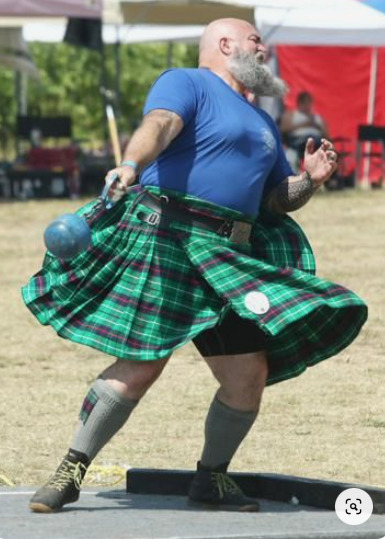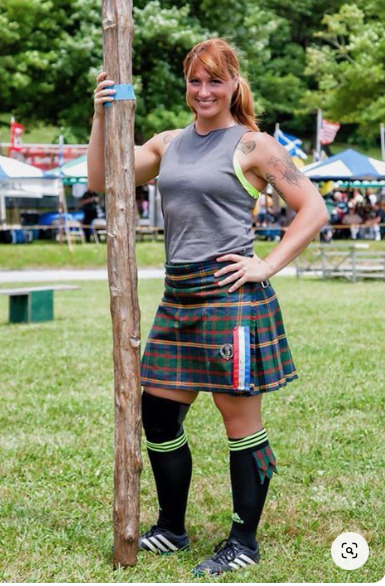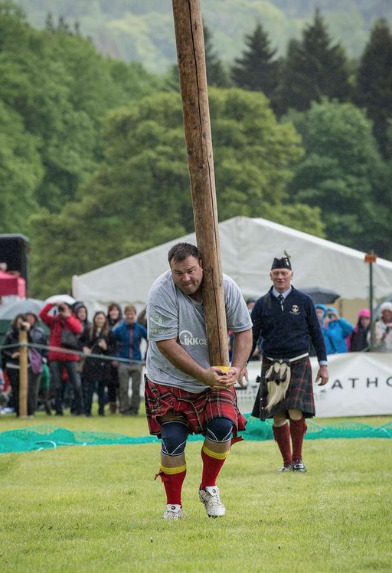Text
hot artists don't gatekeep
I've been resource gathering for YEARS so now I am going to share my dragons hoard
Floorplanner. Design and furnish a house for you to use for having a consistent background in your comic or anything! Free, you need an account, easy to use, and you can save multiple houses.
Comparing Heights. Input the heights of characters to see what the different is between them. Great for keeping consistency. Free.
Magma. Draw online with friends in real time. Great for practice or hanging out. Free, paid plan available, account preferred.
Smithsonian Open Access. Loads of free images. Free.
SketchDaily. Lots of pose references, massive library, is set on a timer so you can practice quick figure drawing. Free.
SculptGL. A sculpting tool which I am yet to master, but you should be able to make whatever 3d object you like with it. free.
Pexels. Free stock images. And the search engine is actually pretty good at pulling up what you want.
Figurosity. Great pose references, diverse body types, lots of "how to draw" videos directly on the site, the models are 3d and you can rotate the angle, but you can't make custom poses or edit body proportions. Free, account option, paid plans available.
Line of Action. More drawing references, this one also has a focus on expressions, hands/feet, animals, landscapes. Free.
Animal Photo. You pose a 3d skull model and select an animal species, and they give you a bunch of photo references for that animal at that angle. Super handy. Free.
Height Weight Chart. You ever see an OC listed as having a certain weight but then they look Wildly different than the number suggests? Well here's a site to avoid that! It shows real people at different weights and heights to give you a better idea of what these abstract numbers all look like. Free to use.
175K notes
·
View notes
Text




I have to draw a lot of gold and metal for my work, but wasn't happy with any of the metal tutorials i could find around. I prefer really specific instruction, so after some research i put together what i think works as a generalist's guide/tutorial. Not perfectly accurate, but i hope it's helpful!
26K notes
·
View notes
Note
How to write about someone’s appearance? Their physique, styles, face , clothes,?
How to Describe a Character's Appearance
-> dabblewriter.com
-> link to Character Description Prompts
Avoid Over-Describing
Overloading readers with too much information can be overwhelming and make your characters feel flat and one-dimensional. Focus on the details that are the most important to the story and the characters themselves.
If the character's appearance is not central to the story, then you may only need to give a basic description. If it plays a significant role, you may want to go into more detail. Always keep the purpose of your physical descriptions in mind.
Show Don't Tell
Don't blatantly state every little thing about your character's appearance, but rather show it through their actions and behaviors.
example: If they are tall, show that through their actions. They have to duck to get under a doorway, they help someone reach the top shelf, etc.
Include Personality Traits
A character's personality is what makes them memorable. Consider their motivations, values, beliefs, and quirks and give them a well-defined personality.
Avoid Stereotypes
Create characters that are more than just their cultural, racial, ethnic, or gender identity. Give them unique interests, hobbies, and personalities. Allow them to have flaws, contradictions, and diverse perspectives.
External Features
External features include a character's height, weight, body type, and general appearance. You can describe their skin color, hair color, eye color, and any distinctive features like freckles or scars. This type of description gives the reader a basic understanding of what the character looks like, which is helpful in creating a mental image.
Clothing
Describing the type of clothing they wear, including the colors, patterns, and how they fit, can reveal a lot about a character’s personality and social status.
For example, a character who wears tailored suits and expensive shoes might be a little snobby and concerned with their image, while a character who wears ripped jeans and t-shirts might be casual and relaxed.
Facial Features
Facial features can be used to give the reader a more in-depth understanding of a character's personality and emotions. You can describe their smile, the way they frown, their cheekbones, and their jawline. You can also describe their eyebrows, the shape of their nose, and the size and shape of their eyes, which can give the reader insight into their emotions.
Body Language
Body language can be used to give the reader an understanding of a character's emotions and personality without the need for dialogue. Describing the way a character stands, walks, or gestures can reveal a lot about their confidence level, mood, and attitude.
For example, a character who slouches and avoids eye contact is likely to be shy, while a character who stands up straight and makes direct eye contact is likely to be confident.
Words to Describe Various Features
Head and face
Oval: rounded, elongated, balanced, symmetrical
Round: full, plump, chubby, cherubic
Square: angular, defined, strong, masculine
Heart: pointy, triangular, wider at the temples, narrow at the chin
Diamond: angular, pointed, narrow at the forehead and jaw, wide at the cheekbones
Long: elongated, narrow, oval, rectangular
Triangular: angular, wide at the jaw, narrow at the forehead, inverted heart-shape
Oblong: elongated, rectangular, similar to oval but longer
Pear-shaped: narrow at the forehead, wide at the jaw and cheekbones, downward-pointing triangle
Rectangular: angular, defined, similar to oblong but more squared
Facial features
Cheeks: rosy, plump, gaunt, sunken, dimpled, flushed, pale, chubby, hollow
Chin: pointed, cleft, rounded, prominent, dimpled, double, weak, strong, square
Ear: large, small, delicate, flapped, pointed, rounded, lobeless, pierced
Eyes: deep-set, angled, bright, piercing, hooded, wide-set, close-set, beady, slanted, round, droopy, sleepy, sparkling
Forehead: high, broad, wrinkled, smooth, furrowed, low, narrow, receding
Jaw: strong, square, defined, angular, jutting, soft, weak, chiseled
Lips: full, thin, chapped, cracked, puckered, pursed, smiling, quivering, pouty
Mouth: wide, small, downturned, upturned, smiling, frowning, pouting, grimacing
Nose: hooked, straight, aquiline, button, long, short, broad, narrow, upturned, downturned, hooked, snub
Eyebrows: arched, bushy, thin, unkempt, groomed, straight, curved, knitted, furrowed, raised
Hair
Texture: curly, straight, wavy, frizzy, lank, greasy, voluminous, luxurious, tangled, silky, coarse, kinky
Length: long, short, shoulder-length, waist-length, neck-length, chin-length, buzzed, shaven
Style: styled, unkempt, messy, wild, sleek, smoothed, braided, ponytail, bun, dreadlocks
Color: blonde, brunette, red, black, gray, silver, salt-and-pepper, auburn, chestnut, golden, caramel
Volume: thick, thin, fine, full, limp, voluminous, sparse
Parting: center-parted, side-parted, combed, brushed, gelled, slicked back
Bangs: fringed, side-swept, blunt, wispy, thick, thin
Accessories: headband, scarf, barrettes, clips, pins, extensions, braids, ribbons, beads, feathers
Body
Build: slender, skinny, lean, athletic, toned, muscular, burly, stocky, rotund, plump, hefty, portly
Height: tall, short, petite, lanky, willowy, stocky, rotund
Posture: slouching, upright, hunched, stiff, relaxed, confident, nervous, slumped
Shape: hourglass, pear-shaped, apple-shaped, athletic, bulky, willowy, curvy
Muscles: defined, toned, prominent, ripped, flabby, soft
Fat distribution: chubby, plump, rounded, jiggly, wobbly, flabby, bloated, bloated
Body hair: hairy, smooth, shaven, beard, goatee, mustache, stubble
Weight: light, heavy, average, underweight, overweight, obese, lean, skinny
Body language: confident, nervous, aggressive, submissive, arrogant, timid, confident, relaxed
Body movements: graceful, clunky, fluid, awkward, jerky, smooth, agile, rigid
Build
Muscular: ripped, toned, defined, well-built, buff, brawny, burly, strapping
Athletic: fit, toned, agile, flexible, energetic, muscular, athletic, sporty
Thin: skinny, slender, slim, lanky, bony, gaunt, angular, wiry
Stocky: sturdy, broad-shouldered, compact, muscular, solid, robust, heavy-set
Overweight: plump, chubby, rotund, heavy, portly, corpulent, stout, fleshy
Fat: overweight, overweight, rotund, heavy, bloated, tubby, round, fat
Lean: lanky, slender, skinny, thin, wiry, willowy, spare, underweight
Larger: large, heavy, hefty, substantial, solid, overweight, portly, rotund
Skin
Texture: smooth, soft, silky, rough, bumpy, flaky, scaly, rough
Tone: fair, light, pale, dark, tan, olive, bronze, ruddy, rosy
Complexion: clear, radiant, glowing, dull, blotchy, sallow, ruddy, weathered
Wrinkles: deep, fine, lines, crow's feet, wrinkles, age spots
Marks: freckles, age spots, birthmarks, moles, scars, blemishes, discoloration
Tone: even, uneven, patchy, discolored, mottled, sunburned, windburned
Glow: luminous, radiant, healthy, dull, tired, lifeless
Tautness: taut, firm, loose, saggy, wrinkles, age spots, slack
Condition: healthy, glowing, radiant, dry, oily, acne-prone, sunburned, windburned
Style
Clothing: trendy, stylish, fashionable, outdated, classic, eclectic, casual, formal, conservative, bold, vibrant, plain, ornate
Fabric: silk, cotton, wool, leather, denim, lace, satin, velvet, suede, corduroy
Colors: bright, bold, pastel, neutral, vibrant, muted, monochrome
Accessories: jewelry, hats, glasses, belts, scarves, gloves, watches, necklaces, earrings, bracelets, rings
Shoes: sneakers, boots, sandals, heels, loafers, flats, pumps, oxfords, slippers
Grooming: well-groomed, unkempt, messy, clean-cut, scruffy, neat
Hair: styled, messy, curly, straight, braided, dreadlocks, afro, updo, ponytail
Makeup: natural, bold, minimal, heavy, smokey, colorful, neutral
Personal grooming: clean, fragrant, unkempt, well-groomed, grooming habits
Overall appearance: put-together, disheveled, polished, rough, messy, tidy
If you like what I do and want to support me, please consider buying me a coffee! I also offer editing services and other writing advice on my Ko-fi! Become a member to receive exclusive content, early access, and prioritized writing prompt requests.
1K notes
·
View notes
Text
How to get a book quote from a printer
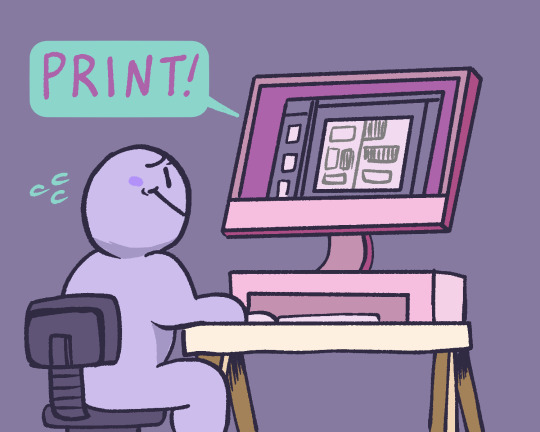
Whether you’re planning a small print run for your comic or looking into other printed projects, learning how to work with printers is an amazing skill. Though many book printers do have online tools to calculate pricing (Mixam, Greko, RA Comics Direct, and Keness being a few), reaching out to a sales rep at the printer is always an option too!
Information a printer needs to give you a quote (and Delphina’s recommendations):
Paper quality (interior) - For North American printers, the thinnest option you would want is about 50lb text for your interior paper. The higher the number, the thicker the paper. 70 or 80lbs is about the top range. Other countries use gsm instead of lbs, so this range is about 90gsm - 150gsm. This paper will be called either “text” or “book” paperstock. It is often available in matte (normal) or gloss (shiny), whichever is your preference.
Paper quality (cover) - If you want your cover to be a thicker paper stock than your inner pages, look for cardstock around100lbs/270gsm. This thicker paper will be in the cover stock category.
For both paper categories, printers are often 100% okay with mailing you some sample sheets of paper of various weights so you can compare them, so don’t be afraid to ask!
Binding type - Your most common options here are case binding (hardcover), perfect binding (softcover), or saddlestitched (staple in the middle, the number of pages has to be a multiple of four).

Size - Some printers have specific sizes they print at (6.625x10.25 is a standard North American graphic novel size, but Europe uses A4-A6 sizes). Many will offer some variant of a “manga” size or do custom sizes. Measure your favorite books to see what size they are and find something similar!
Bleed - If you want any of your art to run all the way to the edge of the page, you should make a larger version of your page size with 3mm or 0.125 inches of extra art on the top, bottom, left and right sides. This is called bleed.
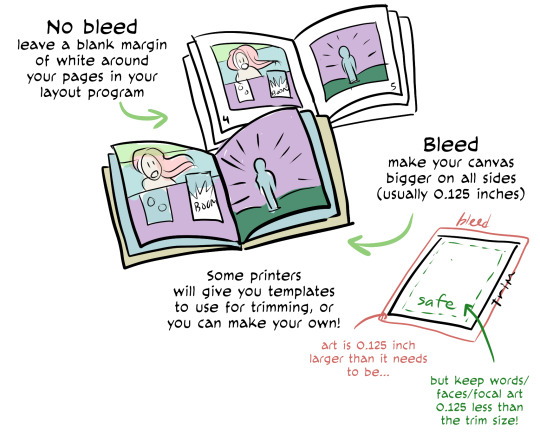
Colors - Your options here are one-color (black and white) or CMYK (full color). Sometimes this is called 4/4 (4 over 4) to indicate the four colors of toner (cyan, magenta, yellow, and black) or 1/1 (1 over 1) to indicate K only (black)
Pro tip: If you CAN print black and white only, it’s usually gonna be cheaper!

Number of pages: Make sure you count the title page too!
Spine: Once you know the number of pages and the thickness of your paper, you can use a spine calculator to figure out how much extra you need to add to the middle of your front/back cover design (or just ask the printer in your email!)
Special fancy things: Gold foil, spot UV gloss, lamination, and dust covers for case bound books are some common ones.
Quantity: All right, so this one’s a big pain because HOW ARE YOU SUPPOSED TO KNOW? I will say that comic books are hard to sell in an online store, but easier if you’re doing a crowdfunding campaign. Ask your printer what their minimum run is (note that setting up to print books takes a lot of time, so most printers will want you to print a lot and give you price breaks accordingly). I recommend printing a run of at least 100 if you’re considering stocking these in a store or for conventions, though there are print-on-demand places that will print fewer.
I usually print in conjunction with a crowdfund with the idea of having some left over for my online store and conventions. I ask for quotes of 100, 200, and 500, but you can adjust these depending on your needs.
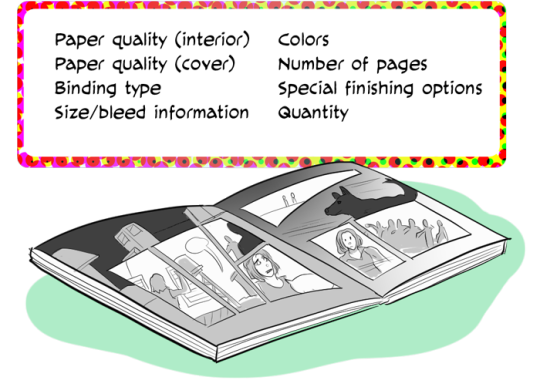
Let’s put it all together!
Once I find 2-3 printers I am interested in using, I email them all at the same time to ask for pricing. That way I can compare how fast they respond to me and if any of them are clearly better priced than the others.
Here’s what a email I might send to a printer would look like. Feel free to copy and change the numbers for your own purposes!
Hello, I’d like to request a quote for an upcoming comic printing project. Please find the specs below:
Size: 6.625" x 10.25"
Pages: 104 (cover + 100 inner pages)
Bleed: None
Binding: Perfect binding
Inside Paper: 75lb Gloss, Text Stock
Inside Printing: Black and White 1/1
Cover: 140lb Cover Stock
Cover Printing: CMYK, 4/0
Quantity: I would like a quote for 100, 200 and 300 copies
Please let me know if you need any other information from me to put together a quote, and what the spine width would be for this. Thank you for your help!
Name
Email
Phone
Happy book printing, everyone!
2K notes
·
View notes
Text
“This is your daily, friendly reminder to use commas instead of periods during the dialogue of your story,” she said with a smile.
554K notes
·
View notes
Text

tweet
Something like this would be so colossally helpful. I'm sick and tired of trying to research specific clothing from any given culture and being met with either racist stereotypical costumes worn by yt people or ai generated garbage nonsense, and trying to be hyper specific with searches yields fuck all. Like I generally just cannot trust the legitimacy of most search results at this point. It's extremely frustrating. If there are good resources for this then they're buried deep under all the other bullshit, and idk where to start looking.
113K notes
·
View notes
Text
Writing Tip: Character Webs
So you have a set of characters ready for the curtain to rise and the story to begin. But how do they get along with each other? Do they even get along at all?
Character relationships are REALLY hard to do. But character webs have helped me keep track of how everybody relates to one another. They’re a way to visually connect characters to help you remember what they think of each other.
They end up looking something like this:

And honestly? They’re just as cool as they look. Let’s go through a quick rundown of how they work.
Keep reading
4K notes
·
View notes
Text
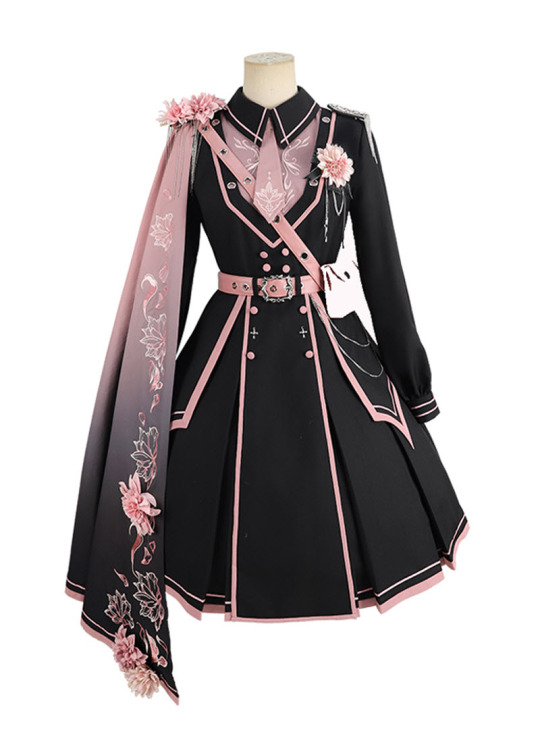





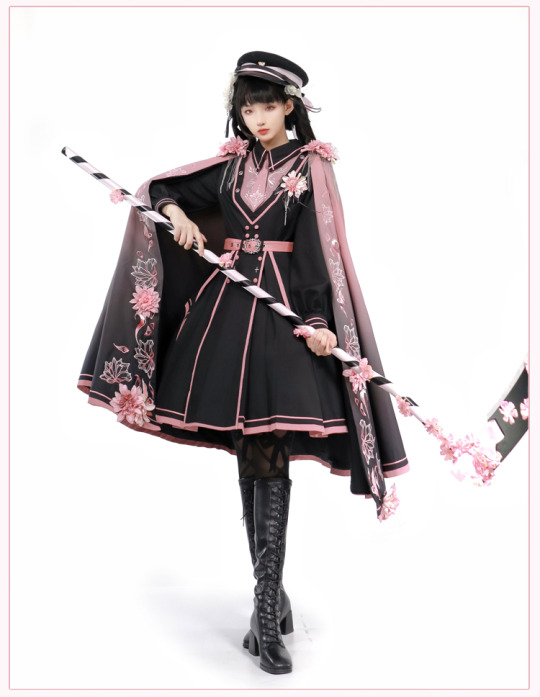

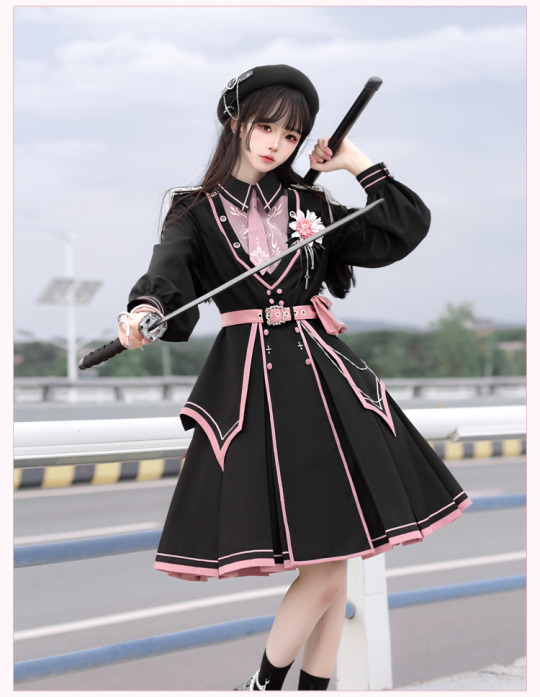
New Release: ChunLu 【-Lofty Goals-】 Military Lolita OP Dress and Cape
◆ Shopping Link >>> https://lolitawardrobe.com/chunlu-lofty-goals-military-lolita-op-dress-and-cape_p8057.html
5K notes
·
View notes
Text
Fantasy Names
Enigma (f)
Gaia (f)
Euphemia (f)
Kalliopi (f)
Luitpold (m)
Kosma (f)
Alawis (m)
Moria (f)
Sol (f/m)
Ansgar (m)
Zoraya (f)
Raginald (m)
Adalind (f)
Ophelio (m)
Minna (f)
Atlantis (m/f)
Fridolin (m)
Sirena (f)
Mars (m)
Ryn (f/m)
Bruna (f)
Tassilo (m)
Dahlia (f)
Yami (m)
Lyra (f)
Alexios (m)
Océane (f)
Valerian (m)
Walda (f)
Erix/Eryx (m)
Lalita (f)
Aramir (m)
Isalin (f)
Odila/Otila (f)
Karan (m)
Helias (m)
Isgard (f)
Brun (m)
Valassia (f)
Aura (f)
Luitger (m)
Selie (f)
Admes (m)
Faralda (f)
Nayan (m)
Malachi (m)
Xelena (f)
Philemon (m)
Zephyr/Zephir (m)
Deva (f)
Disclaimer: You can, of course, use any name you like for any genre of story. Some of these names are from actual mythology, some of them I just liked as names in a fantasy story.
More names!
1K notes
·
View notes
Text
68 notes
·
View notes
Text
How to draw short hair from the back by Buboo
9K notes
·
View notes
Photo
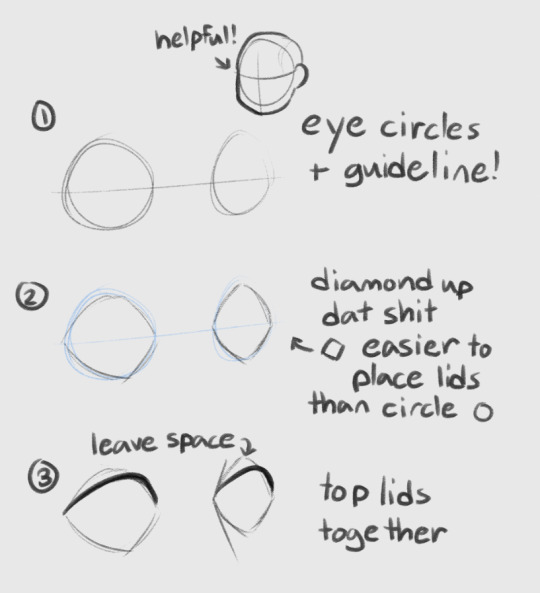
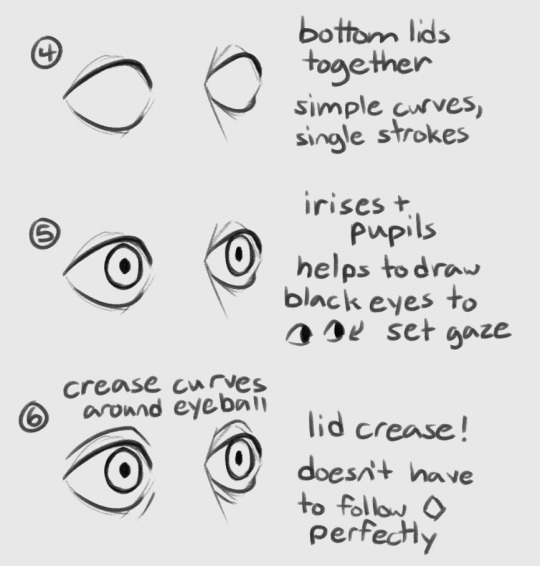
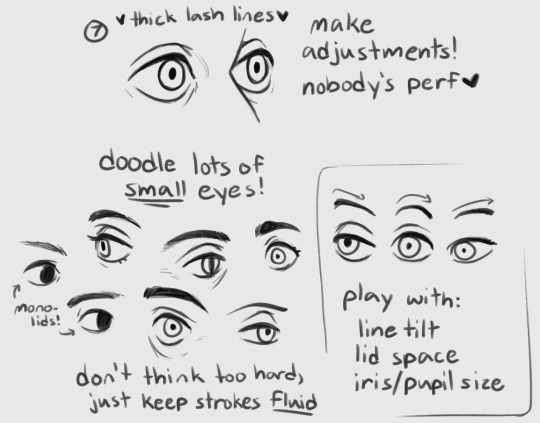
people have asked me how i draw eyes so i made an extremely slap-dash eye tutorial! this is simply about how i draw a simple neutral eye, nothing to do with expressions (that’s a whole other thing).
start with the horizontal guide on the face, to help place the eyes. put circles where the eyes will go!
adjust the circles into diamond shapes– i got this idea from sinix design on youtube, it’s very helpful and easier to see where the lids should end than with a circle.
draw the top lid/lash lines, leaving a bit of space at the top of the diamond. keep each eye in time with each other– drawing one whole eye first makes it harder to match the other one.
then the bottom lids. i usually try to do all the lid shapes with a single curved stroke each. keep it simple pals!
irises & pupils. sometimes i’ll draw filled-in black circles for the irises, to help figure out where to place them naturally!
lid creases, use the leftover diamond at the top as a loose guide for where to place them. remember that the lid curves around the eyeball.
make adjustments! things don’t always come out perfect immediately. i usually have to thicken the lash line (i like mine quite thick), move the bottom lid up or down, and sometimes resize a whole eye (easier on computer than traditional, i know!). if you’re on a computer make sure to flip your canvas often so you can see these little things ❤
and to practice, just doodle a lot of small eyes! keeping them small makes them easier and faster to finish, so you can focus on your strokes and playing around with shapes, tilt, lid space, all that. don’t worry about making the irises perfect circles/ovals or any of that, just try to capture the character. have fun!
7K notes
·
View notes
Note
whats the process you go through when making something like hair look flow-ey but still have weight to it?
i don't have a particular process, but jotted some notes on my personal habits that might be useful (or not lol):
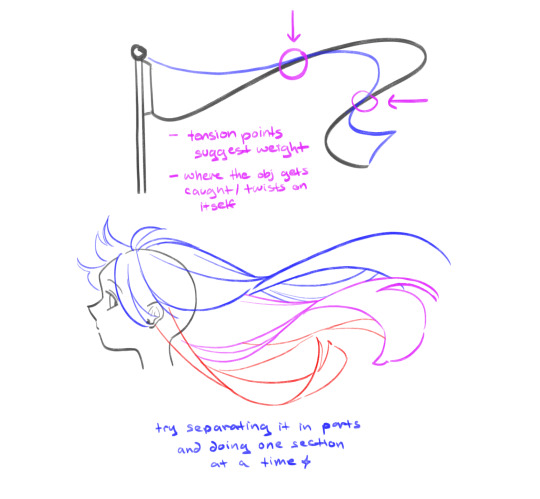
i suggest looking at some pictures or videos of long flags/banners, and compare how hair looks under water (when it floats free of gravity) versus something blowing in the wind (when its physical form/weight acts upon itself)
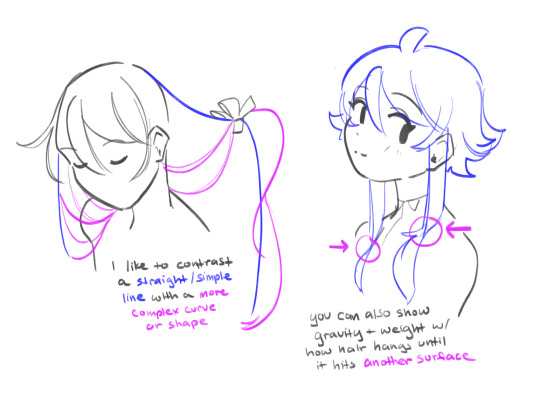
try blocking out shapes and then adding detail a little at a time. of course, these "tips" don't really apply to ALL types of hair, since different kinds of hair have different textures or shapes.
2K notes
·
View notes
Text
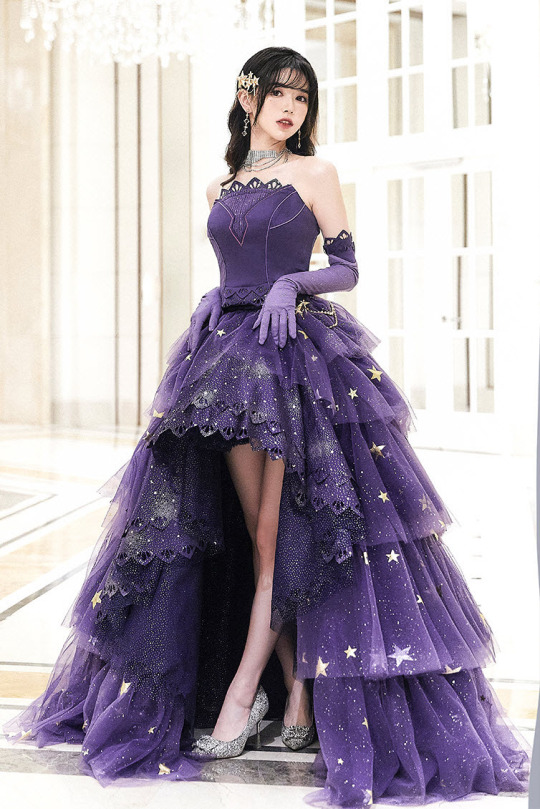
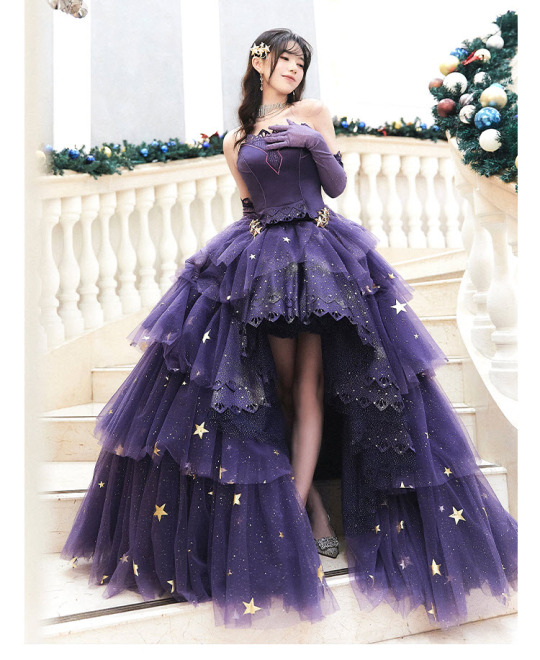




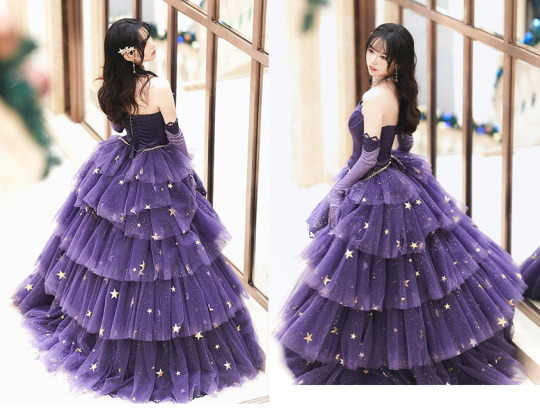
◆ Shipment UPDATES: Nikki Tomorrow 『☆-Interstellar Princess-☆』 Lolita Top Wear and Skirt Set Will Be Ready For Shipping Within ONE WEEK!!!
◆ YOU Will Receive Your Set Within 2 Weeks ^^
1K notes
·
View notes
Photo



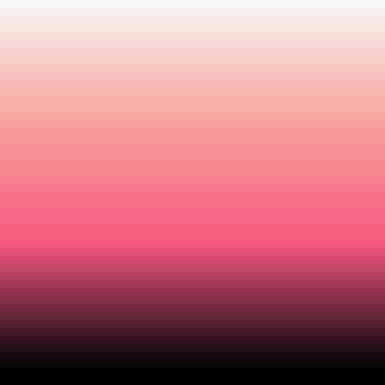




In Yoshi’s Island, the last background layer in most levels is a gradient generated by the game’s engine. The gradients are only ever seen partially, always being obscured by at least one other background layer. Here are some of the game’s most prominent gradients, extracted from the data.
Main Blog | Twitter | Patreon | Small Findings | Source
3K notes
·
View notes

